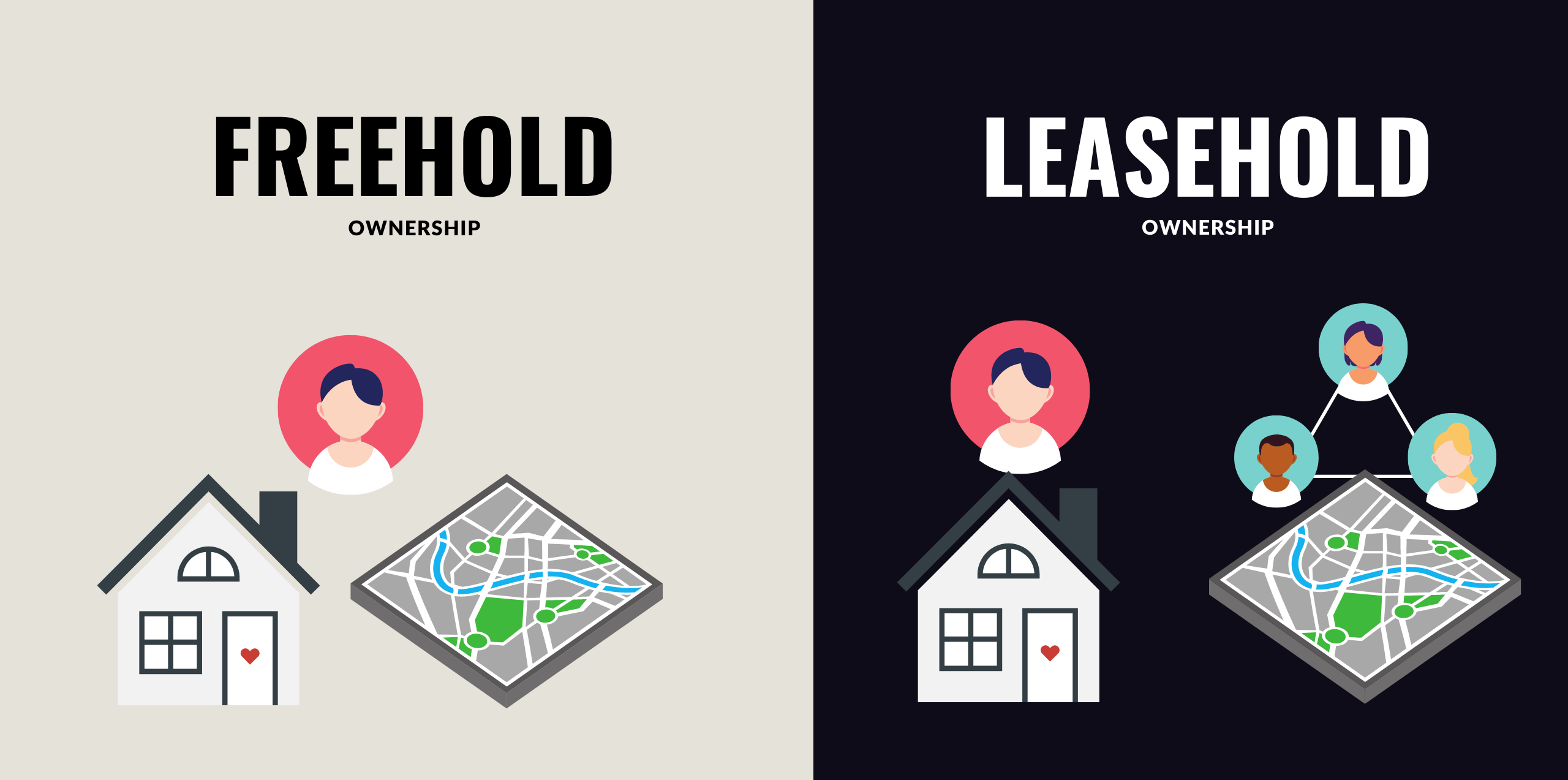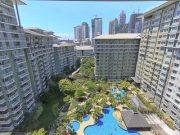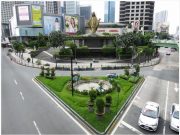
Setting the Stage for Real Estate Ownership
Imagine you’ve found the perfect investment: a brand-new condo or maybe a house and lot. You’re ready to sign the papers, but then you encounter the terms “freehold property” and “leasehold property.” What do they mean for your future? Do you own the land? Can you pass it to your children?
The type of ownership you choose is absolutely critical. It determines your financial security, your rights to control and modify the asset, and its long-term value. For anyone investing in the country, especially given the Philippines’ unique and strictly regulated rules regarding land ownership, understanding the significant differences between leasehold vs. freehold is non-negotiable. This guide will clearly define these two categories, helping you make a confident investment decision.
Freehold Ownership (The “Absolute” Right)
Freehold ownership, also known as absolute ownership, means you permanently own both the land and any buildings on it. Unlike leasehold, which ends after a set time, freehold lasts forever and is ideal for building wealth across generations. Simply put, freehold gives you full and lasting control over your property.
When you buy freehold property, you get the title to both the land and the structures on it, guaranteeing indefinite ownership. This is the strongest form of property ownership available.
1. What Confirms Freehold Rights?
The legal foundation confirming freehold property ownership in the Philippines is the Torrens System. This internationally recognized system ensures secure and straightforward land ownership. The main legal proof of your full ownership is either the Transfer Certificate of Title (TCT) or the Original Certificate of Title (OCT).
- Transfer Certificate of Title (TCT): This is the most common document, issued when a property is transferred from one owner to another.
- Original Certificate of Title (OCT): This title is issued for the very first time, typically when a piece of land is successfully registered through a judicial or administrative process.
The TCT or OCT is your official, government-backed proof of ownership. It protects your property from most claims and disputes, giving you clear and undisputed rights. These documents confirm your ownership with the government, making your claim solid and secure.
2. Rights of the Freehold Owner
As the holder of a Torrens Title, you control the asset completely and indefinitely. Your rights over the property are absolute and include:
- Selling: You have the exclusive right to transfer the property to any eligible buyer.
- Modifying: You can renovate, demolish, or build new structures without seeking permission from any third party (outside of standard building code permits).
- Mortgaging: You can use the land and structure as collateral for a loan or mortgage.
- Passing to Heirs: You can pass the property to your legal heirs in perpetuity, ensuring the asset remains with your family for generations.
As a freehold owner, you enjoy complete control over your asset. You can sell it, modify it, use it as collateral, mortgage it, or pass the property to your heirs forever. You control the asset completely, subject only to general zoning and police power regulations.
3. Who Can Own Freehold Land?
The fundamental rule governing land ownership in the Philippines is clear and designed to protect national patrimony.
- The Rule: The Philippine constitution is clear: only Filipino citizens or corporations that are at least 60% Filipino-owned can legally own freehold land.
- The Condominium Exception (The Nuance): Foreigners can’t own freehold land in the Philippines, but they can own condo units. When a foreigner buys a condo, they get a Condominium Certificate of Title (CCT), which gives them full ownership of their unit and shared ownership of the land under the building with other unit owners. This is the main way non-Filipinos can have near-freehold ownership of a residential property in the country.
| Ownership Aspect | Freehold Land (TCT) | Condominium Unit (CCT) |
| Asset Owned | Land and all structures on it. | The individual unit (the living space/improvements). |
| Title Type | Transfer Certificate of Title (TCT) | Condominium Certificate of Title (CCT) |
| Land Component | 100% Owned by the Title Holder. | Co-owned with all other unit owners in the building. |
| Foreign Eligibility | Restricted to Filipino Citizens. | Open to Foreign Nationals (up to 40% of the building’s total units). |
Leasehold Ownership (The “Temporary” Right)
While freehold ownership means you own the land and buildings forever, leasehold property offers a practical alternative, especially for foreign investors and big businesses. With a leasehold, you get the right to use and develop the land for a set period, but you don’t own the land itself.
In a leasehold arrangement, you own the building or improvements, but only lease the land for a fixed time. This is all spelled out in a formal lease agreement.
1. The Leasehold Agreement
Leasehold property means you fully own the building or improvements on the land, but your right to use the land itself is limited to a fixed period set by a contract. This separates ownership of the building from the use of the land beneath.
Your right to use the land is documented in a long-term lease contract, which is usually annotated on the freeholder’s Transfer Certificate of Title (TCT).
Duration: In the Philippines, the maximum lease term for private land is generally 50 years. This lease can be renewed once for another 25 or 50 years, making the total lease period up to about 100 years.
Comparison: Freehold vs. Leasehold Control
| Feature | Freehold (TCT) | Leasehold (Long-Term Contract) |
| Ownership of Land | Perpetual (Absolute Ownership) | Fixed-Term Ownership (Max 100 years) |
| Document of Rights | Transfer Certificate of Title (TCT) | Leasehold Agreement Philippines (Annotated) |
| Control Over Improvements | Absolute | Absolute, for the duration of the lease |
| Property Reversion | Never | Default: Land and improvements revert to the freeholder |
2. Rights and Restrictions of a Leaseholder
While a leasehold gives you control over the building and land use for a set time, it comes with clear limits. You must follow the freeholder’s rules and cannot make major changes to the land without permission. Most importantly, your rights end when the lease expires.
As the leaseholder, you own the improvements you make, but the landowner controls the land. You must stick to the lease agreement’s terms. For example:
- You cannot easily alter the land (for example, changing its fundamental use, such as turning agricultural land into residential land) without the freeholder’s clear permission.
- You must follow the lease terms. The lease agreement sets rules on how the land can be used (residential, commercial, industrial), and breaking these rules violates the contract.
- You cannot sell the land itself, only your lease rights and any buildings or improvements you own for the remaining lease period.
What happens at the end of the lease? The key difference between freehold and leasehold is what happens when the lease ends. Your rights stop when the lease expires. This is the biggest risk. Usually, the land and any buildings or improvements you made (like a house or factory) go back to the original owner, unless the lease agreement says the owner must buy your improvements from you.
3. Who Uses Leasehold in the Philippines?
- The Foreign Investor
Leasehold is the legal way for foreigners to control a house and lot in the Philippines since they cannot own the land itself. They enter a long-term lease agreement with a Filipino or Filipino-owned corporation, allowing them to own the house (the “improvements”) and have exclusive rights to use the land for up to 100 years. They can also sell the house along with the remaining lease term to another buyer, whether local or foreign.
- Commercial and Industrial Investment
Leasehold property is widely used by both large local and foreign companies for major infrastructure and industrial projects. Many economic zones, government-owned properties, and large private land banks offer long-term leasehold arrangements to attract significant investment. This approach is preferred because:
- It simplifies foreign direct investment.
- It allows the landowner to keep ownership while enabling development.
- It supports the quick setup of large facilities like factories, resorts, or industrial plants under secure long-term leases.
To summarize the key differences and help you decide between leasehold vs. freehold investment, look at this direct comparison:
| Feature | Freehold Property | Leasehold Property |
|---|---|---|
| Duration of Ownership | Indefinite (Forever) | Fixed term (Max 50+50 years) |
| Asset Type | Land and structure | Right to use the land and own structure (or just the right to use both) |
| Ultimate Control | Absolute control over the asset. | Restricted control based on the leasehold agreement. |
| Inheritance | Straightforward; assets pass to heirs indefinitely. | Heirs inherit the remaining lease term only. |
| Primary Philippine Users | Filipino citizens and 60/40 Filipino corporations. | Foreigners (for land), and commercial/industrial enterprises. |
Leasehold vs. Freehold Investment: Financial and Investment Implications
When investing, don’t just look at the purchase price. Think about resale value, financing, and ongoing costs. Freehold ownership offers lasting security and steady value growth. Leasehold property costs less upfront but carries the risk of the lease ending. This difference is crucial for your investment’s long-term success.

Appreciation and Resale Value
The core distinction between the two forms of tenure lies in how their value changes over time.
A. Freehold: The Appreciation Engine
Freehold property generally appreciates better over time. Why? Because land is the most valuable and limited part of real estate. When you own the land forever, its value keeps rising.
- Perpetual Asset: Freehold ownership has no expiration date, meaning the investor owns the full asset forever.
- Maximum Liquidity: The simple, clean title (TCT) makes the property maximally liquid and attractive to the broadest pool of buyers.
B. Leasehold: The “Ticking Clock” Effect
For a leasehold investment, the value depends heavily on how much time is left on the lease. This causes the property’s resale value to drop steadily over time, a phenomenon known as the “ticking clock” effect.
When the lease has less than 20 years remaining, buyers become hesitant because:
- Risk of Reversion: As the lease nears its end, the land and any buildings on it will likely return to the original owner.
- Financing Issues: Banks usually won’t finance properties with less than 15 years left on the lease, making it tough to sell or refinance.
Recommendation: If investing in leasehold, structure your exit strategy to sell before the lease falls into the final 20-year bracket to secure optimal returns.
Financing and Mortgages
Is it easier to get bank financing for freehold property? Yes. Banks prefer lending on freehold properties because the absolute ownership provides stronger collateral under land ownership laws. For leasehold properties, banks often refuse loans or offer shorter terms if the remaining lease duration is short, making financing harder to secure.
A. Freehold: The Preferred Collateral
It is much easier to get bank financing for freehold property. Banks see absolute ownership (TCT) as strong collateral because they can seize and sell both the land and the building if you default. This makes lending less risky, leading to longer mortgage terms and often lower interest rates for freehold properties.
B. Leasehold: Mortgage Complications
Mortgaging a leasehold property is more complicated. Banks may finance leases with a long remaining term (like 50 years), but if the lease is shorter, they often refuse or offer shorter loan terms. This is because the bank needs to recover its investment before the lease ends. Shorter leases mean higher monthly payments and less affordable loans for buyers.
Costs and Fees
While closing costs might be similar, a leaseholder has an ongoing expense that a freeholder does not: the ground rent or fixed lease payments. This recurring fee is paid to the freeholder for the right to use their land and should be included in your long-term cost calculations.
1. Closing Costs
Closing costs, which typically include documentary stamp tax, transfer tax, registration fees, and legal fees, are not significantly different between freehold and leasehold properties. Both require processing major legal documents; either transferring the TCT or annotating the long-term lease, so the expenses are comparable.
2. Ongoing Holding Costs
The key difference in expenditure is the mandatory, ongoing payment for using the land itself.
- Freehold Owner: Pays only recurring Real Property Taxes (RPT) to the local government and necessary maintenance or association fees.
- Leaseholder: Pays ground rent or fixed lease payments to the freeholder. This is a regular cost for the right to use the land, which the freeholder does not have to pay.
This ground rent, often subject to increases as outlined in the lease contract, should be included in your cost comparison between leasehold and freehold properties. Over time, these payments can reduce the initial savings that leasehold ownership might seem to offer.
| Financial Factor | Freehold Property (TCT) | Leasehold Property (Contract) |
| Asset Security | Excellent (Perpetual) | Declining (Finite term) |
| Value Behavior | Appreciates with market value of land. | Depreciates as the lease shortens (“Ticking Clock”). |
| Financing Access | Excellent; long-term, readily available. | Complicated, limited, or refused if the remaining lease is short. |
| Ongoing Land Cost | Real Property Tax only. | Ground Rent or fixed lease payments (paid to freeholder). |
| Resale Market | Broad and liquid. | Narrow, highly dependent on the remaining years of the lease. |
Frequently Asked Questions (FAQ)
Successfully investing in Philippine real estate means understanding ownership rules, especially for foreigners. These FAQs answer the most important questions about leasehold vs. freehold property ownership.
Can a Filipino citizen choose a leasehold?
Yes. Filipino citizens can enter into a leasehold agreement, but it’s rare for residential properties. This usually happens when using government land or preferring a business deal over buying outright.
If I marry a Filipino, can I convert my leasehold property to freehold?
No. Marriage does not change land ownership laws. Foreign spouses cannot bypass restrictions to gain freehold ownership.
What is the safest way for a foreigner to invest in residential property?
Buying a condo unit is the safest choice. Condo units come with a freehold Condominium Certificate of Title (CCT), allowing ownership without land restrictions.
What legal steps should I take before signing a leasehold agreement?
Always verify the freeholder’s Transfer Certificate of Title (TCT) with the Registry of Deeds. Check the lease annotation on the title. Most importantly, hire an independent lawyer to review the lease terms, termination clauses, and reversion rights before signing.
Does a developer selling a property guarantee it’s freehold?
No. Developers sell both freehold and leasehold properties. Always ask to see the actual title document (TCT or CCT) that will be registered in your name.
For foreigners buying a house on land, expect a leasehold arrangement. Don’t rely on marketing materials—demand the title documents and review the contract carefully.
Making Your Decision
The choice between leasehold vs. freehold comes down to your citizenship and goals. If you are a Filipino citizen and want permanent ownership, easy inheritance, and strong property value growth, freehold is the way to go.
If you are a foreign investor or need a flexible, fixed-term commercial setup, leasehold is your best option to control land.
Always know your ownership rights under the civil code. Before buying, talk to a real estate lawyer or trusted broker at HousingInteractive to make the right decision.

























